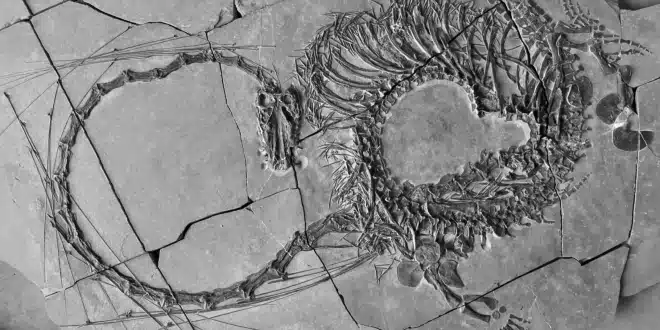Scientists have unveiled a strikingly complete fossil of an aquatic reptile from the Triassic period, measuring 16 feet (5 meters) in length.
This ancient creature, estimated to be around 240 million years old, has been nicknamed a “dragon” due to its exceptionally long neck. Officially recognized as Dinocephalosaurus orientalis, this species was first identified in 2003.
The discovery of this fossil has provided researchers with the opportunity to examine the entire anatomy of this extraordinary prehistoric creature. The find was made by an international research team in the Guizhou Province of southern China and later showcased at the National Museums Scotland.
Dr. Nick Fraser, a member of the team that studied the fossil in depth, highlighted the uniqueness of the discovery, noting the animal’s peculiar characteristics such as flipper-like limbs and a neck longer than its body and tail combined. The neck, composed of 32 distinct vertebrae, is believed to have been a hunting adaptation, enabling the creature to forage for food in underwater crevices.
The fossil was unearthed in ancient limestone deposits in southern China, adding to the fascinating diversity of the Triassic era’s wildlife. Dr. Fraser, in conversation with BBC News, remarked on the continual discoveries of new species in these deposits, emphasizing the era’s uniqueness.
Comparisons have been drawn between this creature and Tanystropheus hydroides, another marine reptile from the same era, due to similarities in size and certain skull features. Yet, Dinocephalosaurus stands out for its more serpentine appearance, attributed to its greater number of neck and torso vertebrae.
The research team, comprising experts from Scotland, Germany, the United States, and China, concluded that Dinocephalosaurus was highly adapted to life in the ocean. This conclusion was supported by its flippered limbs and the well-preserved remains of fish found in its stomach area.
Their findings and analysis of new fossil specimens have been documented in a paper published in the journal Earth and Environmental Science: Transactions of the Royal Society of Edinburgh.


